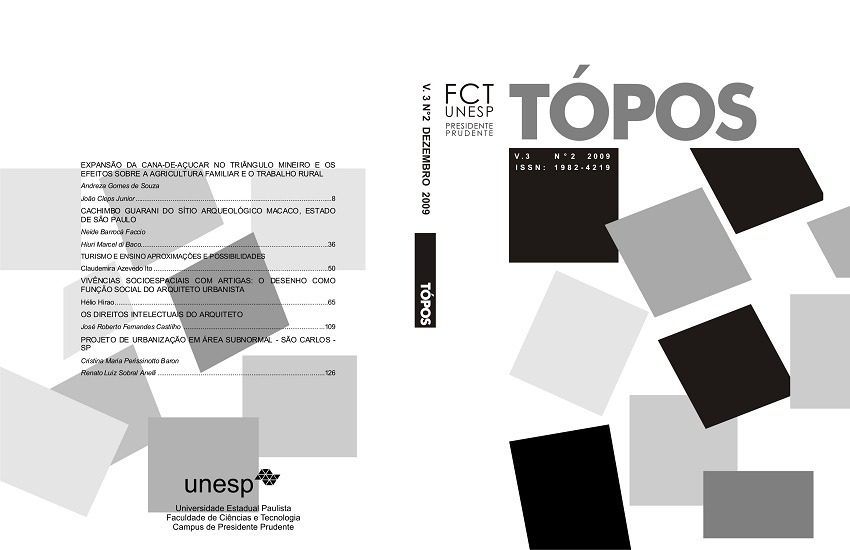EXPANSÃO DA CANA-DE-AÇÚCAR NO TRIÂNGULO MINEIRO E OS EFEITOS SOBRE A AGRICULTURA FAMILIAR E O TRABALHO RURAL
Resumo
Este artigo apresenta os resultados do projeto, “A dinâmica agroindustrial canavieira no Triângulo Mineiro e os efeitos sobre a agricultura familiar e a produção de alimentos”, financiado pelo PIBIC/CNPq/UFU. A pesquisa objetiva compreender os motivos da entrada da cana-de-açúcar no P.A. Nova Santo Inácio Ranchinho, o decréscimo da área de produção de alimentos em Campo Florido, Minas Gerais, e a utilização da mão de obra nos novos canaviais. Para tanto, a organização da pesquisa pautou-se: na revisão teórica de conceitos; no levantamento de dados; na pesquisa de campo com lideranças do assentamento e do sindicato dos trabalhadores do corte da cana e em análises das informações e dados coletados. A presença das usinas no Triângulo Mineiro impulsionou a produção de açúcar e álcool, resultando num aumento de terras empregadas no cultivo da monocultura e no decréscimo de áreas destinadas a culturas tradicionais no município. Mesmo que os assentados continuem envolvidos com a produção da cana, o número de renovação de contratos de arrendamento entre eles foi reduzido. Atualmente, onze famílias permanecem vinculadas à produção de cana no assentamento.
Palavras-chave: Triângulo Mineiro; cana-de-açúcar; agricultura familiar.
EXPANSION OF SUGAR CANE IN THE TRIÂNGULO MINEIRO AND EFFECTS ON FAMILY FARMING AND RURAL LABOUR
Abstract
This paper presents results of the project, "The dynamics in sugar cane agro Triangle Mining and the Impacts on Agriculture and Family Food Production", funded by PIBIC / CNPq, UFU. The research aims to understand the reasons for the entry of cane sugar PA New Ranchinho St. Ignatius, the decrease in the area of food production in Campo Florido, Minas Gerais, and the use of the labor force in the new fields. Therefore, the research organization was based: the theoretical review of concepts, data collection, field research with the settlement leaders and workers union of Campo Florido and analysis of information and data collected. The presence of plants in the Minas Triangle boosted the production of sugar and alcohol, resulting in an increase of land used in sugar cane cultivation and the decrease of land area under traditional crops in the county. While remaining involved with the production of sugarcane, the number of renewal of leases between the settlers was reduced. Currently, eleven families remain linked to production of sugarcane in the settlement.
Keywords: Triangulo Mineiro; sugar cane; family farming.

